Beyond the Checklist: Overcoming Communication Barriers in Behavioral Health
A provider reviews a patient’s chart, asks a series of questions, and nods at the quiet, one-word answers. Seeing no further questions from the patient, the provider marks the encounter as complete, misinterpreting the patient’s silence as agreement. In reality, the patient is completely overwhelmed, their silence a sign of anxiety, not understanding. This breakdown in effective communication happens far too often in busy healthcare settings.
While many healthcare professionals are familiar with the principles of good communication, significant hurdles still prevent these communication strategies from being effective in behavioral health. Our previous discussion on “Better Care: Patient Communication for Mental Health” highlighted the power of words. Now, we will dive deeper into the specific communication barriers in behavioral health—like stigma, time constraints, and fear—and offer practical solutions to dismantle them for providers, patients, and their families to improve mental health and overall health outcomes.
The Invisible Barriers to a Healing Conversation in Healthcare Settings
Effective communication is the cornerstone of quality care and positive health outcomes, yet invisible walls often stand between providers and patients. Identifying these barriers is the first step toward breaking them down. They typically fall into three main categories: stigma, the clinical environment, and cognitive disconnects.
Barrier 1: Stigma and Fear
Stigma remains one of the most significant communication barriers in behavioral health. On the patient’s side, this often manifests as a fear of being judged, labeled, or not taken seriously if they disclose feelings of anxiety or depression. They may worry that their emotional struggles will be dismissed or that it could negatively impact the quality of their physical health care.
Providers are not immune to fear, either. Some may worry about saying the wrong thing and making the situation worse. Others may hesitate to ask about a patient’s mental well-being for fear of opening a “can of worms” they feel unequipped or too time-crunched to handle appropriately. This mutual apprehension creates a wall of silence where it’s needed most.
Barrier 2: The Clinical Environment and Health Care System
Healthcare settings are often fast-paced and task-oriented. The constant pressure to see more patients and complete checklists can unintentionally push behavioral health conversations to the side. A lack of privacy, with conversations happening in open bays or with the door ajar, can make patients reluctant to share sensitive information.
Additionally, the health care system itself often prioritizes physical symptoms over emotional and mental well-being. A patient’s chief complaint might be chest pain, but the underlying cause could be a severe panic attack. When workflows are built around physical diagnoses, the emotional and behavioral components of health can be easily overlooked, creating systemic communication barriers in behavioral health.
Barrier 3: Non-Verbal and Cognitive Disconnects
Communication skills in behavioral health extend beyond words. Patients experiencing mental health challenges may struggle to articulate their feelings, making nonverbal cues and active listening even more critical. However, a rushed provider may miss subtle signs of distress like a flat affect, restless hands, or lack of eye contact.
There is also a common, and often incorrect, assumption that a patient who doesn’t ask questions fully understands their condition and care plan. For someone struggling with anxiety or depression, processing new information can be difficult. Their silence might not signal comprehension but rather an inability to even formulate a question, leaving them feeling lost and isolated.
From Barrier to Bridge: Communication Strategies for Healthcare Providers
Overcoming these barriers doesn’t require a complete overhaul of clinical practice. It starts with small, intentional shifts in approach. By implementing proactive communication strategies, healthcare staff can transform a transactional encounter into a therapeutic alliance that enhances mental health care and improves health outcomes.
Tackling Stigma and Fear with Cultural Competence
The most effective way to fight stigma is to normalize the conversation around mental health and behavioral health. Instead of waiting for a patient to bring it up, integrate it into routine questioning with cultural competence.
- Normalize the conversation: Use introductory phrases like, “A new diagnosis can be overwhelming for many people. How are you feeling emotionally about this?”
- Verbalize safety: Be explicit about your role as a trusted partner. A simple statement like, “This is a safe space to talk about whatever is on your mind, not just your physical symptoms,” can be incredibly powerful.
Managing the Environment in Healthcare Settings
You can create a pocket of calm and focus even in the most chaotic environment. It’s about signaling to the patient that for this moment, they are your sole priority.
- Use “The First Minute” Technique: Dedicate the first 60 seconds of any interaction to making a personal connection before diving into the clinical checklist. Ask about their day or mention something non-medical to build rapport.
- Leverage Visual Aids: Tools like patient whiteboards can be used to create a shared agenda. Adding a section for “My Concerns” or “How I’m Feeling Today” gives the patient explicit permission to discuss their mental state.
- Signal Privacy: Simple actions speak volumes. Sit down instead of standing over the bed, pull the curtain completely, or lower your voice slightly. These non-verbal cues show the conversation is important and private.
Reading Between the Lines: Active Listening and Beyond
To truly understand your patient, you must become adept at observing and clarifying. This involves pairing what you see with what you hear through active listening.
- Pair verbal and non-verbal assessment: If you observe something, name it gently and ask an open-ended question. For example, “I notice you seem quiet today. Can you tell me what’s on your mind?”
- Use the Teach-Back Method for Mental Health: The teach-back method isn’t just for confirming comprehension of medication schedules. Adapt it for emotional support. Instead of asking, “Do you understand?”, try, “To make sure I’ve explained things clearly, can you tell me what you’ll do if you start to feel overwhelmed when you get home?”

How to Be Heard: A Patient’s Guide to Better Communication in Behavioral Health
Patients and their families also have a vital role in breaking down communication barriers in behavioral health. Feeling empowered to advocate for your own emotional well-being can dramatically improve your care experience.
Prepare for Your Appointment with Eligibility Criteria in Mind
Walking into an appointment prepared can reduce anxiety and ensure your concerns are addressed.
- Use the “Three Questions” Method: Before your visit, write down the top three things you want to discuss. Make sure at least one of them is about your emotional state. For example: “1. What are the side effects of this new medication? 2. When can I expect to feel better? 3. I’ve been feeling very anxious about this whole process; what support is available?”
Use “I” Statements to Enhance Communication Skills
How you frame your concerns matters. Using “I” statements helps you express your feelings without making the provider feel defensive.
- Instead of saying, “You’re not listening to me,” try, “I feel like my concerns about my anxiety aren’t being fully heard. Could we talk about them for a minute?”
Connect Physical and Emotional Health for Better Health Outcomes
Providers are trained to solve problems. By explicitly linking your mental state to your physical condition, you give them a clear problem to address.
- For example, tell your doctor, “Since my diagnosis, managing my blood sugar has been making me feel really down and unmotivated.”
Enlist an Advocate
It’s okay to ask for help. Bring a trusted family member or friend to your appointments. They can help ask questions, take notes, and voice concerns that you might feel hesitant to share on your own.

Your Next Conversation Is an Opportunity for Positive Change
Overcoming communication barriers in behavioral health is a collaborative effort. It requires providers to consciously create a safe and empathetic environment, and it requires patients to feel empowered to speak up about their needs. Every interaction, no matter how brief, is an opportunity to build a bridge of trust and understanding.
For Patients: Prepare one question about your emotional well-being for your next healthcare appointment. Remember, your voice is a critical part of your care.
For Providers: This week, try “The First Minute” technique with every patient. Dedicate 60 seconds to building a human connection before opening the chart.
Partner with VisiCare today to enhance patient safety and advance behavioral health solutions. Together, we can implement effective communication strategies and cultural competence to improve health outcomes across diverse healthcare settings.


